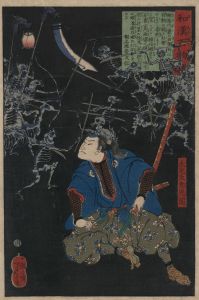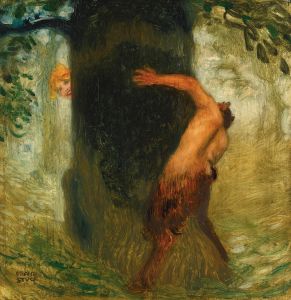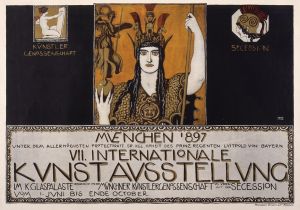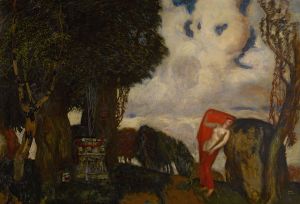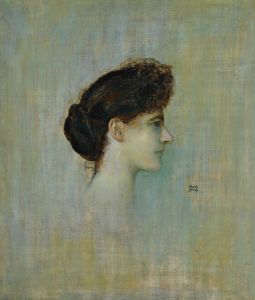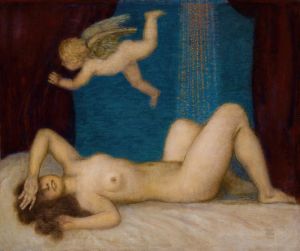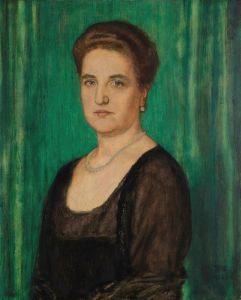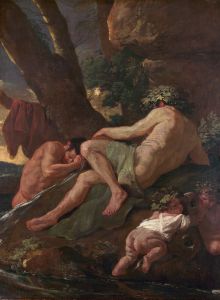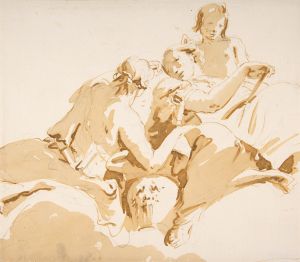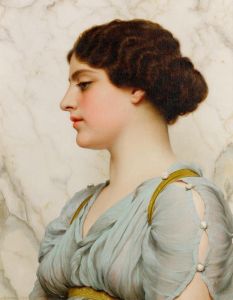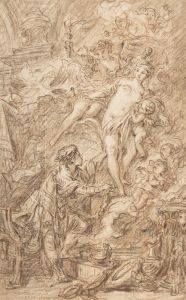
Pygmalion
A hand-painted replica of Franz von Stuck’s masterpiece Pygmalion, meticulously crafted by professional artists to capture the true essence of the original. Each piece is created with museum-quality canvas and rare mineral pigments, carefully painted by experienced artists with delicate brushstrokes and rich, layered colors to perfectly recreate the texture of the original artwork. Unlike machine-printed reproductions, this hand-painted version brings the painting to life, infused with the artist’s emotions and skill in every stroke. Whether for personal collection or home decoration, it instantly elevates the artistic atmosphere of any space.
Franz von Stuck's "Pygmalion" is a notable painting created by the German symbolist artist, who was active during the late 19th and early 20th centuries. Stuck, born in 1863 in Bavaria, was a prominent figure in the Munich Secession movement and is renowned for his mythological and allegorical subjects. His work often explores themes of fantasy, mythology, and the human condition, and "Pygmalion" is a quintessential example of these interests.
The painting "Pygmalion" draws inspiration from the ancient Greek myth of Pygmalion, a sculptor who fell in love with a statue he had carved. According to the myth, Pygmalion was a talented artist who became disenchanted with the women around him and decided to create his ideal woman out of ivory. He named her Galatea. Pygmalion's love for his creation was so profound that he prayed to the goddess Aphrodite to bring the statue to life. Moved by his devotion, Aphrodite granted his wish, and Galatea became a living woman.
In Stuck's interpretation of this myth, the painting captures the moment of transformation, a theme that resonates with the symbolist movement's fascination with metamorphosis and the blurring of reality and fantasy. Stuck's style is characterized by dramatic contrasts, rich colors, and a focus on the emotional and psychological depth of his subjects. His use of light and shadow, as well as his attention to detail, contribute to the painting's evocative and mystical atmosphere.
Franz von Stuck was known for his ability to convey complex narratives through his art, and "Pygmalion" is no exception. The painting reflects his interest in exploring the boundaries between art and life, creator and creation. It also highlights the power of love and desire, central themes in both the myth and Stuck's broader body of work.
Stuck's contributions to art extend beyond his paintings. He was also an accomplished architect and designer, and his influence can be seen in the development of modern art in Germany. As a founding member of the Munich Secession, Stuck played a crucial role in promoting new artistic ideas and challenging traditional norms. His work, including "Pygmalion," is celebrated for its innovative approach and its ability to capture the imagination of viewers.
Today, Franz von Stuck's "Pygmalion" is appreciated for its artistic merit and its ability to convey timeless themes through a mythological lens. The painting remains an important part of Stuck's legacy and continues to be studied and admired by art enthusiasts and scholars alike. Through his depiction of Pygmalion and Galatea, Stuck invites viewers to reflect on the nature of creation, the power of love, and the enduring allure of mythological stories.






